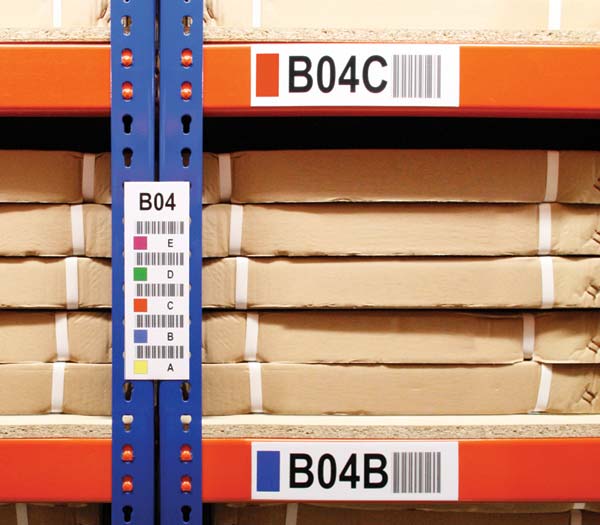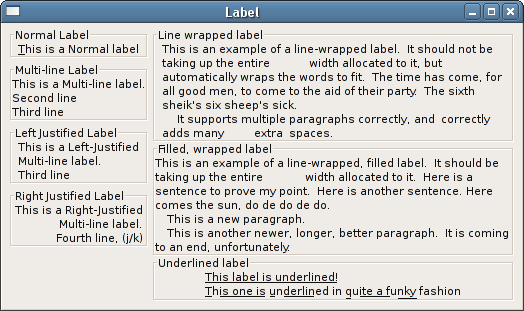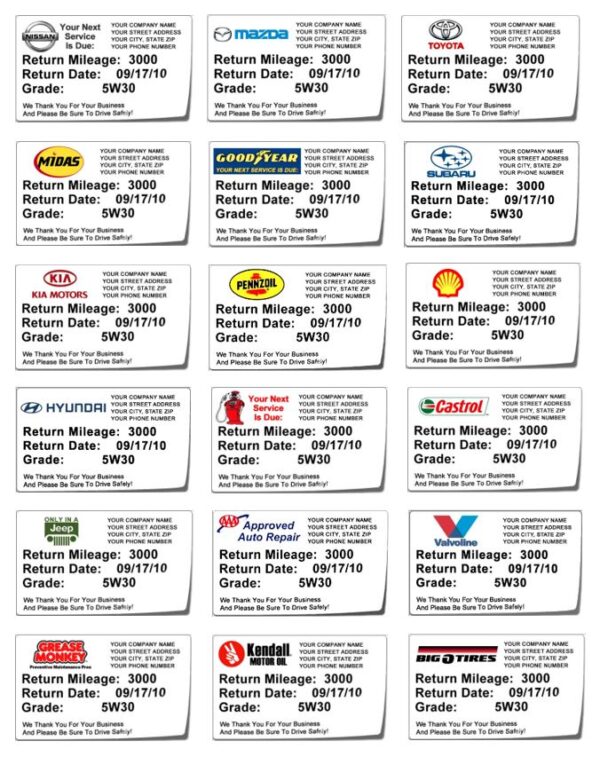45 apply labels in r
apply(), lapply(), sapply(), tapply() Function in R with Examples The apply () function is the most basic of all collection. We will also learn sapply (), lapply () and tapply (). The apply collection can be viewed as a substitute to the loop. The apply () collection is bundled with r essential package if you install R with Anaconda. The apply in R function can be feed with many functions to perform redundant ... Quick-R: Variable Labels describe (mydata) Unfortunately the label is only in effect for functions provided by the Hmisc package, such as describe (). Your other option is to use the variable label as the variable name and then refer to the variable by position index. names (mydata) [3] <- "This is the label for variable 3" mydata [3] # list the variable To Practice
How to add label in table() in R - Stack Overflow table returns an R object of class "table", which is just an array of integers with some attributes. Are you asking how to layout/print a table? In that case the R packages kable and stargazer might be worth for you to take a look at. -

Apply labels in r
Draw Scatterplot with Labels in R (3 Examples) | Base R & ggplot2 Example 1: Add Labels to Base R Scatterplot. This Example illustrates how to draw labels to a plot created with the basic installation of the R programming language. For this, we have to use the plot() and text() functions as shown below. Note that we have to increase the xlim of our plot to give enough space for the labels: Add variable label(s) to variables — set_label • sjlabelled Add variable label (s) to variables This function adds variable labels as attribute (named "label") to the variable x, resp. to a set of variables in a data frame or a list-object. var_labels () is intended for use within pipe-workflows and has a tidyverse-consistent syntax, including support for quasi-quotation (see 'Examples'). Add value labels to variables — set_labels • sjlabelled if labels is a vector and x is a data frame, labels will be applied to each column of x. Use labels = "" to remove labels-attribute from x. force.labels Logical; if TRUE, all labels are added as value label attribute, even if x has less unique values then length of labels or if x has a smaller range then length of labels. See 'Examples'.
Apply labels in r. Change Labels of GGPLOT2 Facet Plot in R - GeeksforGeeks Method 1: Combine Label Variable with Facet Labels If we want to combine Label Variable (LBLs) to Facet Labels (Values of LBLs), then for that we simply have to use labeller parameter of facet_grid () and set label_both to its value. Example 1: R library("ggplot2") DF <- data.frame(X = rnorm(20), Y = rnorm(20), LBLs = c("Label 1", "Label 2", Quick-R: Value Labels Value Labels . To understand value labels in R, you need to understand the data structure factor. You can use the factor function to create your own value labels. # variable v1 is coded 1, 2 or 3 # we want to attach value labels 1=red, 2=blue, 3=green mydata$v1 <- factor(mydata$v1, levels = c(1,2,3), labels = c("red", "blue", "green")) labels function - RDocumentation Labels can be stored as an attribute "variable.label" for each variable in a data set using the assignment function. With the extractor function one can assess these labels. Usage # S3 method for data.frame labels (object, which = NULL, abbreviate = FALSE, ...) ## assign labels labels (data, which = NULL) <- value expss: Tables with Labels in R - GitHub Pages Introduction. expss computes and displays tables with support for 'SPSS'-style labels, multiple / nested banners, weights, multiple-response variables and significance testing. There are facilities for nice output of tables in 'knitr', R notebooks, 'Shiny' and 'Jupyter' notebooks. Proper methods for labelled variables add value labels support to base R functions and to some ...
Create a labelled vector. — labelled • haven A labelled vector is a common data structure in other statistical environments, allowing you to assign text labels to specific values. This class makes it possible to import such labelled vectors in to R without loss of fidelity. This class provides few methods, as I expect you'll coerce to a standard R class (e.g. a factor()) soon after importing. R and labelled data: Using quasiquotation to add variable ... - R-bloggers Adding value labels to variables using quasiquotation. Usually, set_labels() can be used to add value labels to variables.The syntax of this function is easy to use, and set_labels()allows to add value labels to multiple variables at once, if these variables share the same value labels. In the following examples, we will use the frq() function, that shows an extra label-column containing value ... Tables with labels in R Introduction. expss computes and displays tables with support for 'SPSS'-style labels, multiple / nested banners, weights, multiple-response variables and significance testing. There are facilities for nice output of tables in 'knitr', R notebooks, 'Shiny' and 'Jupyter' notebooks. Proper methods for labelled variables add value labels support to base R functions and to some ... apply_labels: Set variable labels/value labels on variables in the ... data mtcars = apply_labels (mtcars, vs = "Engine", vs = num_lab (" 0 V-engine 1 Straight engine "), am = "Transmission", am = num_lab (" 0 Automatic 1 Manual ")) # 'table' from base R table (mtcars $ vs, mtcars $ am) # more sophisticated crosstable cross_cases (mtcars, vs, am) # the same but with list argument list_arg = list (vs = "Engine", vs = num_lab (" 0 V-engine 1 Straight engine "), am = "Transmission", am = num_lab (" 0 Automatic 1 Manual ")) mtcars = apply_labels (mtcars, list_arg)
APPLY in R with apply() function [with EXAMPLES] In this tutorial you will learn how to use apply in R through several examples and use cases. 1 apply () function in R. 1.1 Applying a function to each row. 1.2 Applying a function to each column. 2 Apply any function to all R data frame. 3 Additional arguments of the apply R function. 4 Applying a custom function. R: Add value labels to variables if x is a data frame, labels may also be a list of (named) character vectors; if labels is a list, it must have the same length as number of columns of x ; if labels is a vector and x is a data frame, labels will be applied to each column of x . Use labels = "" to remove labels-attribute from x. force.labels. How to create ggplot labels in R | InfoWorld There's another built-in ggplot labeling function called geom_label (), which is similar to geom_text () but adds a box around the text. The following code using geom_label () produces the graph ... FACTOR in R [CREATE, CHANGE LABELS and CONVERT data] The factor function. The factor function allows you to create factors in R. In the following block we show the arguments of the function with a summarized description. factor(x = character(), # Input vector data levels, # Input of unique x values (optional) labels = levels, # Output labels for the levels (optional) exclude = NA, # Values to be excluded from levels ordered = is.ordered(x ...
Label Encoding in R programming - All you need to know! Practical Implementation of a Label Encoder in R To begin with, R provides us with ' superml ' library that contains the below set of functions to apply Label Encoder to our data. LabelEncoder$new (): This function creates and initializes an instance of the Label Encoder class.

Easy does it, Labelworx has you covered from labels to labeling systems. Our experts are there ...
apply_labels function - RDocumentation apply_labels: Set variable labels/value labels on variables in the data.frame Description apply_labels tries automatically detect what is variable label and what are value labels. See also var_lab and val_lab. Usage apply_labels (data, ...) Arguments data data.frame/list ... named arguments or lists. Name of argument is a variable name in the data.
The best way to attach labels to numeric variables - RStudio Community Factor works but the script gets really long and it takes a very long time to read the data in. Using the forcats package you can get the unique factor levels for a set of observations by converting to factor after you've read in the data with as_factor().. Once you've read your data in, you can recode the factors with their labels, if you so choose (see thread below).
Add custom tick mark labels to a plot in R software - STHDA To change the style of the tick mark labels, las argument can be used. The possible values are : 0: the labels are parallel to the axis (default) 1: always horizontal 2 : always perpendicular to the axis 3 : always vertical plot (x, y, las=0) # parallel plot (x, y, las=1) # horizontal plot (x, y, las=2) # perpendicular Hide tick marks
expss source: R/apply_labels.R Documented in apply_labels #' Set variable labels/value labels on variables in the data.frame #' #' \code {apply_labels} tries automatically detect what is variable label and #' what are value labels. See also \link {var_lab} and \link {val_lab}. #' #' @param data data.frame/list #' @param ... named arguments or lists.
How to Label Points on a Scatterplot in R (With Examples) Example 1: Label Scatterplot Points in Base R. To add labels to scatterplot points in base R you can use the text () function, which uses the following syntax: text (x, y, labels, …) x: The x-coordinate of the labels. y: The y-coordinate of the labels. labels: The text to use for the labels. The following code shows how to label a single ...
How to Add Labels Directly in ggplot2 in R - GeeksforGeeks This method is used to add Text labels to data points in ggplot2 plots. It positions in the same manner as geom_point () does. Syntax: ggp + geom_text ( label, nudge_x , nudge_y, check_overlap ) Parameters: label: Text labels we want to show at data points nudge_x: shifts the text along X-axis nudge_y: shifts the text along Y-axis
RPubs - Fixing Axes and Labels in R plot using basic options Fixing Axes and Labels in R plot using basic options; by Md Riaz Ahmed Khan; Last updated almost 5 years ago Hide Comments (-) Share Hide Toolbars
Add value labels to variables — set_labels • sjlabelled if labels is a vector and x is a data frame, labels will be applied to each column of x. Use labels = "" to remove labels-attribute from x. force.labels Logical; if TRUE, all labels are added as value label attribute, even if x has less unique values then length of labels or if x has a smaller range then length of labels. See 'Examples'.
Add variable label(s) to variables — set_label • sjlabelled Add variable label (s) to variables This function adds variable labels as attribute (named "label") to the variable x, resp. to a set of variables in a data frame or a list-object. var_labels () is intended for use within pipe-workflows and has a tidyverse-consistent syntax, including support for quasi-quotation (see 'Examples').
Draw Scatterplot with Labels in R (3 Examples) | Base R & ggplot2 Example 1: Add Labels to Base R Scatterplot. This Example illustrates how to draw labels to a plot created with the basic installation of the R programming language. For this, we have to use the plot() and text() functions as shown below. Note that we have to increase the xlim of our plot to give enough space for the labels:














Post a Comment for "45 apply labels in r"